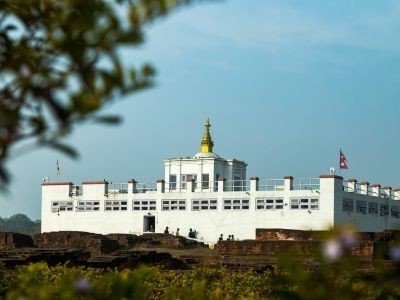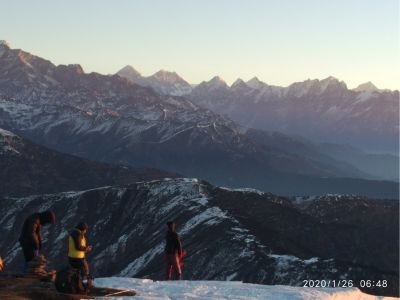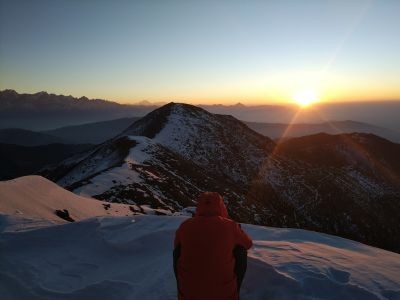Embarking on a trek to Everest Base Camp is a journey of a lifetime, offering adventurers the opportunity to immerse themselves in the breathtaking beauty of the Himalayas and witness the awe-inspiring majesty of Mount Everest. Spanning approximately 130 kilometers round trip, this iconic trek takes you through rugged terrain, remote mountain villages, and stunning alpine landscapes. In this comprehensive guide, we'll delve deep into everything you need to know to plan and prepare for your Everest Base Camp Trek adventure.
Introduction to Everest Base Camp Trek
Nestled in the Khumbu region of Nepal, Everest Base Camp serves as the starting point for climbers attempting to summit Mount Everest, the highest peak in the world. Situated at an altitude of 5,364 meters (17,598 feet), the base camp offers trekkers a glimpse into the world of high-altitude mountaineering and a chance to stand in the shadow of the world's tallest mountain.
Planning Your Trek
1. Physical Preparation:
Trekking to Everest Base Camp demands a good level of physical fitness and endurance. Start preparing several months in advance with cardiovascular exercises, strength training, and long-distance hikes to build stamina and endurance.
2. Choosing the Right Season:
The best time to trek to Everest Base Camp is during the spring (March to May) and autumn (September to November) seasons when the weather is clear, and the trails are relatively dry. Avoid trekking during the monsoon season (June to August) due to heavy rainfall and poor visibility.
3. Obtaining Permits:
Before starting your trek, you'll need to obtain the necessary permits. This includes the Sagarmatha National Park Entry Permit and the Khumbu Pasang Lhamu Rural Municipality Entrance Permit, which can be arranged through licensed trekking agencies in Nepal.
4. Booking a Trekking Agency:
While it's possible to trek independently, many trekkers opt to book with a reputable trekking agency for added support and convenience. Look for agencies with experienced guides, and a commitment to sustainable tourism practices.
Trekking Itinerary
Day 1-2: Kathmandu to Lukla to Phakding (2,652m):
Fly from Kathmandu to Lukla, the gateway to the Everest region, and begin your trek to Phakding, a scenic village nestled along the Dudh Koshi River.
Day 3-4: Namche Bazaar (3,440m):
Trek through lush forests and cross suspension bridges to reach Namche Bazaar, the bustling hub of the Khumbu region. Take a rest day to acclimatize and explore the vibrant markets and Sherpa culture.
Day 5-7: Tengboche to Dingboche (4,410m):
Pass through picturesque villages and dense rhododendron forests as you make your way to Tengboche, home to the famous Tengboche Monastery. Continue to Dingboche, where you'll enjoy stunning views of Ama Dablam and neighboring peaks.
Day 8-9: Acclimatization in Dingboche:
Take an additional day in Dingboche to adjust to the altitude effectively. Take short hikes to nearby viewpoints or relax and soak in the breathtaking mountain scenery.
Day 10-12: Lobuche to Gorak Shep to Everest Base Camp (5,364m):
Trek through the barren terrain of the Khumbu Glacier to reach Gorak Shep, the last settlement before Everest Base Camp. From Gorak Shep, embark on the final leg of your journey to Base Camp, where you'll marvel at the towering peaks surrounding you.
Day 13-14: Kala Patthar (5,545m) to Pheriche to Namche Bazaar:
Wake up early to hike to Kala Patthar, a renowned viewpoint offering panoramic views of Mount Everest and the Khumbu Glacier. Descend to Pheriche and continue back to Namche Bazaar, retracing your steps along the trail.
Day 15-16: Namche Bazaar to Lukla to Kathmandu:
Descend from Namche Bazaar to Lukla and catch your return flight to Kathmandu. Spend your final day in Nepal exploring the vibrant streets of Kathmandu and reflecting on your unforgettable Everest Base Camp adventure.
Essential Gear and Equipment
Clothing:
Pack lightweight, moisture-wicking clothing suitable for layering, including thermal base layers, fleece jackets, waterproof outer layers, and sturdy trekking pants. Don't forget to bring a warm down jacket and a hat and gloves for cold mornings and evenings.
Footwear:
Invest in a good pair of trekking boots with ankle support and a sturdy sole for navigating rocky terrain. Break in your boots before the trek to avoid blisters and discomfort.
Backpack and Daypack:
Choose a comfortable, durable backpack with adjustable straps and a hip belt to distribute weight evenly. Additionally, pack a smaller daypack for carrying essentials during daily hikes.
Sleeping Bag:
Bring a high-quality sleeping bag rated for cold temperatures to ensure a restful night's sleep in the tea houses along the trekking route.
Other Essentials:
Don't forget to pack essential items such as a headlamp with spare batteries, sunglasses with UV protection, sunscreen, lip balm, water bottles or a hydration system, trekking poles, a first-aid kit, toiletries, and snacks.
Health and Safety Tips
Altitude Sickness Prevention:
Ascend gradually, allowing time for proper acclimatization at higher altitudes. Stay hydrated, avoid alcohol and tobacco, and listen to your body for signs of altitude sickness. If symptoms persist, descend to a lower altitude immediately.
Hygiene and Sanitation:
Practice good hygiene and sanitation habits to prevent gastrointestinal illnesses along the trekking route. Wash your hands frequently, use hand sanitizer, and avoid consuming untreated water or uncooked food.
Sun Protection:
Protect yourself from the strong UV rays at high altitudes by wearing sunscreen with a high SPF rating, sunglasses with UV protection, and a wide-brimmed hat or cap.
Emergency Preparedness:
Familiarize yourself with the signs and symptoms of common altitude-related illnesses, such as acute mountain sickness (AMS), high-altitude cerebral edema (HACE), and high-altitude pulmonary edema (HAPE). Carry a fully stocked first-aid kit and know how to use it in case of emergencies.
Cultural and Environmental Considerations
Respect Local Culture:
Show respect for the local Sherpa culture and customs along the trekking route. Ask for permission before taking photographs of locals and their property, and adhere to local customs and etiquette.
Leave No Trace:
Practice Leave No Trace principles to minimize your environmental impact while trekking. Pack out all trash and waste, dispose of waste properly in designated bins or pits, and avoid damaging vegetation or disturbing wildlife.
Conclusion
Embarking on a trek to Everest Base Camp is a life-changing adventure that offers unparalleled opportunities for exploration, self-discovery, and cultural immersion. By planning and preparing diligently, respecting the local culture and environment, and prioritizing health and safety, you can embark on a transformative journey to the roof of the world and create memories that will last a
lifetime. Whether you're drawn to the challenge of conquering high-altitude peaks or seeking solace in the serenity of the Himalayan landscapes, trekking to Everest Base Camp promises an unforgettable experience that will leave you with a profound sense of accomplishment and wonder.
As you traverse the rugged trails and ascend to dizzying heights, you'll be rewarded with panoramic views of snow-capped peaks, colorful prayer flags fluttering in the breeze, and the warmth of Nepalese hospitality. Each step brings you closer to the summit of your dreams and closer to the heart of the world's highest mountain.
But beyond the physical challenges and natural beauty lies a deeper connection to the land and its people. Along the way, you'll forge friendships with fellow trekkers from around the world, share stories and laughter around the communal dinner table, and gain insight into the resilient spirit of the Sherpa people who inhabit this region.
In the end, it's not just about reaching the destination but embracing the journey itself—the moments of triumph and struggle, the quiet moments of reflection, and the profound sense of awe and reverence for the natural world. As you stand at Everest Base Camp, gazing up at the towering peak above, you'll realize that the greatest adventure is the one that takes you beyond your limits and leaves you forever changed.
So, if you're ready to embark on the adventure of a lifetime, lace up your boots, pack your bags, and set your sights on Everest Base Camp. With careful planning, determination, and a spirit of adventure, you'll discover that the journey to the roof of the world is more than just a trek—it's an odyssey of the soul.
Are you ready to take the first step? The mountains are calling, and Everest Base Camp awaits. Join us on an unforgettable journey to the top of the world and let the adventure begin!


